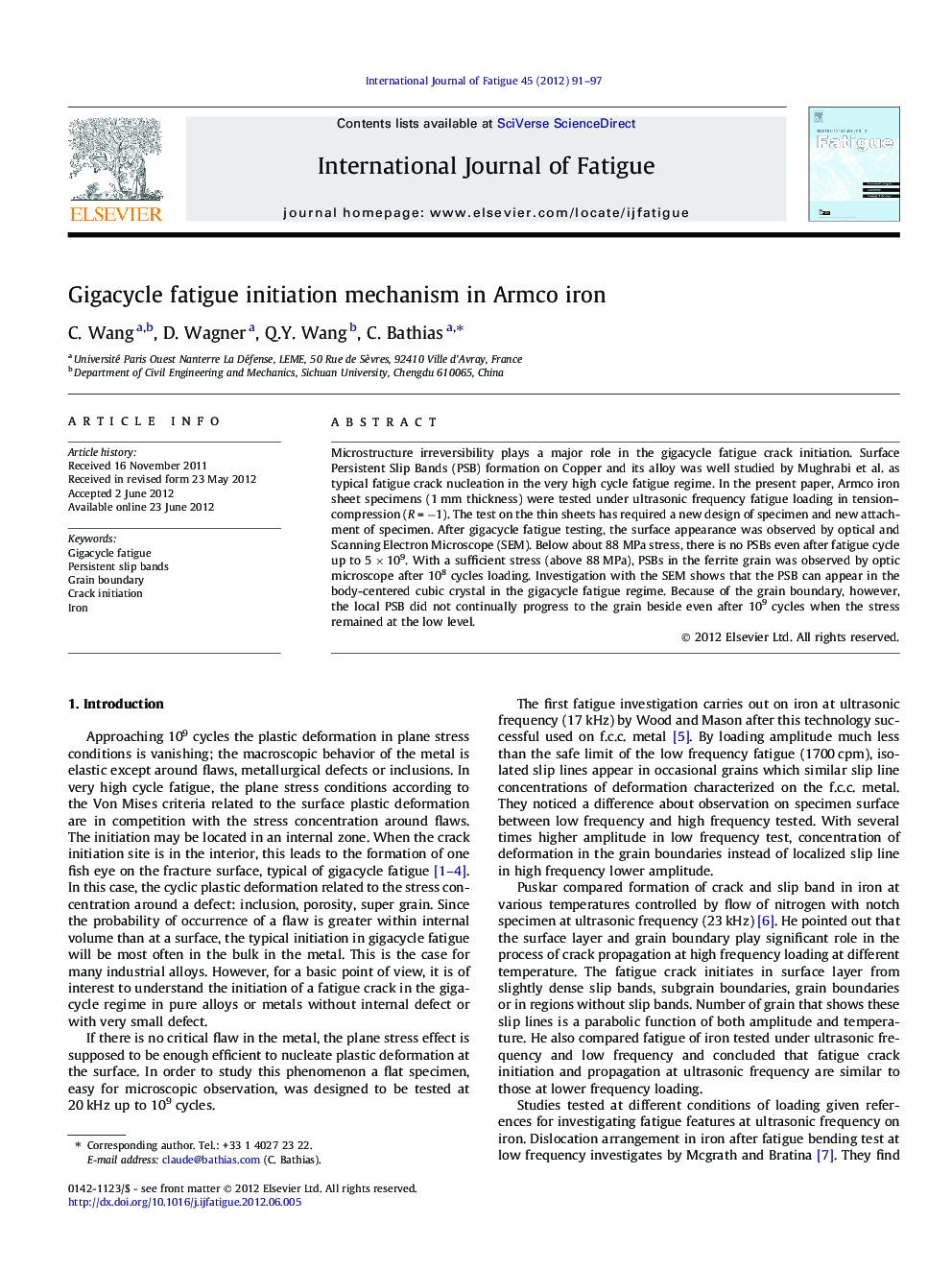| Article ID | Journal | Published Year | Pages | File Type |
|---|---|---|---|---|
| 777734 | International Journal of Fatigue | 2012 | 7 Pages |
Microstructure irreversibility plays a major role in the gigacycle fatigue crack initiation. Surface Persistent Slip Bands (PSB) formation on Copper and its alloy was well studied by Mughrabi et al. as typical fatigue crack nucleation in the very high cycle fatigue regime. In the present paper, Armco iron sheet specimens (1 mm thickness) were tested under ultrasonic frequency fatigue loading in tension–compression (R = −1). The test on the thin sheets has required a new design of specimen and new attachment of specimen. After gigacycle fatigue testing, the surface appearance was observed by optical and Scanning Electron Microscope (SEM). Below about 88 MPa stress, there is no PSBs even after fatigue cycle up to 5 × 109. With a sufficient stress (above 88 MPa), PSBs in the ferrite grain was observed by optic microscope after 108 cycles loading. Investigation with the SEM shows that the PSB can appear in the body-centered cubic crystal in the gigacycle fatigue regime. Because of the grain boundary, however, the local PSB did not continually progress to the grain beside even after 109 cycles when the stress remained at the low level.
► Thin specimen (1 mm) tested in push–pull fatigue with ultrasonic frequency. ► PSBs formation in surface and subsurface investigated in Armco iron specimens. ► Microcrack and fracture surface were discussed in point of view related to PSBs. ► Show that thermal evolution during ultrasonic fatigue test at different condition.
